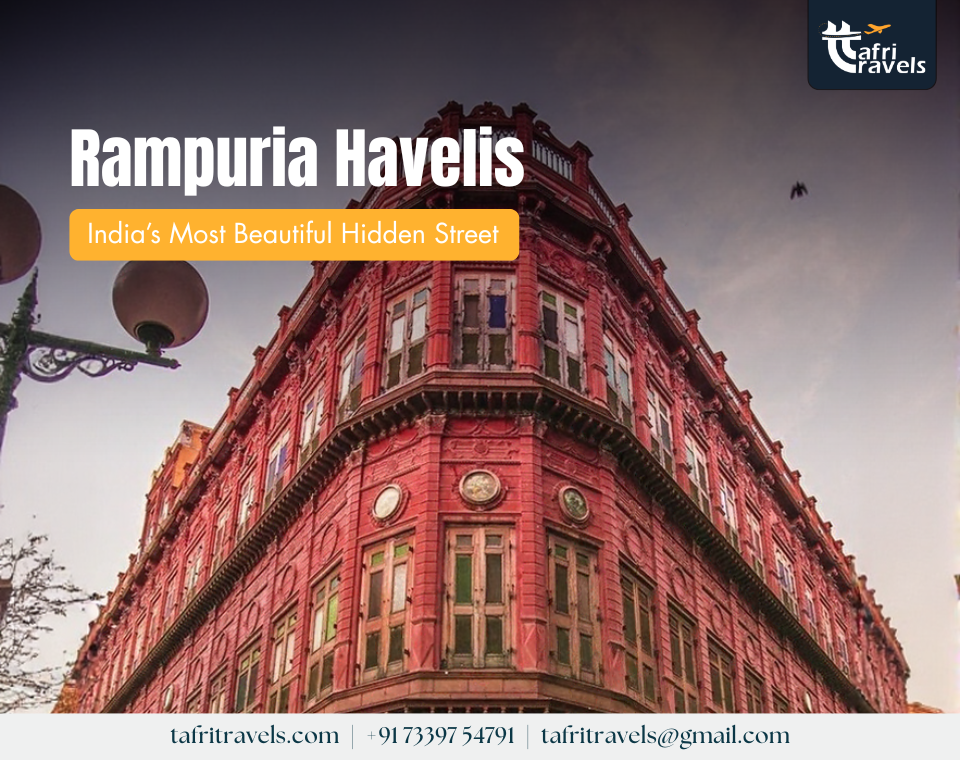
Rampuria Havelis – India’s Most Beautiful Hidden Street
The Rampuria family built a series of 15th-century mansions in Bikaner, and these are known as the Rampuria Havelis. The Rampuria family built the havelis using red sandstone and added detailed carvings, jharokhas, and a blend of Rajput, Mughal, and European designs. Its exquisite heritage marvel originates from iconic interior designs and ornamented styles. In the older section of Bikaner, they give visitors a view of the royal way of life and the rich heritage of Rajasthan.
Table of Contents
ToggleHistory of Rampuria Havelis
The wealthy and royal ‘Rampuria Family’ of Bikaner constructed Rampuria Havelis in the 15th century in the heart of Bikaner to show their leading trade and successful business. These opulent and traditional mansions in Bikaner reflect the city’s cultural heritage and the lifestyle of the Rampuria Family. The Rampuria family built the grand havelis using splendid Red Dulmera Sandstone, which preserves their lasting shine.
During the kings’ rule in Bikaner, Rampurias helped the economy by trading in spices, jewelry, and textiles. The Rampuria family built many havelis to display their successful lives, featuring detailed jharokhas, fancy balconies, elegant frescoes, and mirror work inside.
They were where Rajasthani nobles lived, but they also signified wealth and status. Today, those havelis are alive in the old city, letting people see what the royal past and architectural brilliance were like.
Feel the Royal Vibe: Must-Visit Places in Bikaner for 2025
Features of Rampuria Haveli
The Royal Rampuria Family designed and constructed it, giving it brilliant features and creative detailing:
Red Sand Stone Exteriors

It’s Dulmera red sand stone architecture gives a traditional and luxurious Rajasthani touch to the haveli, which gleams majestically in the eyes. Moreover, intricate carvings, detailed stone designs, and cultural architecture demonstrate Rajasthani brilliance.
Lavish Interiors
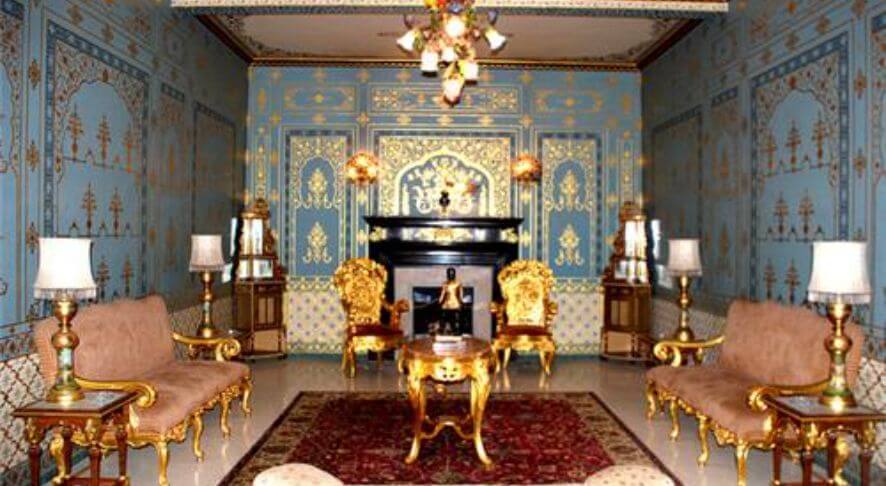
The spacious and ancient stone work and frescoes of the haveli indicate a royal family lifestyle. The deep insights into these cultural structures and hand-made architectures immerse you more into the haveli’s beauty.
Courtyard and Layout
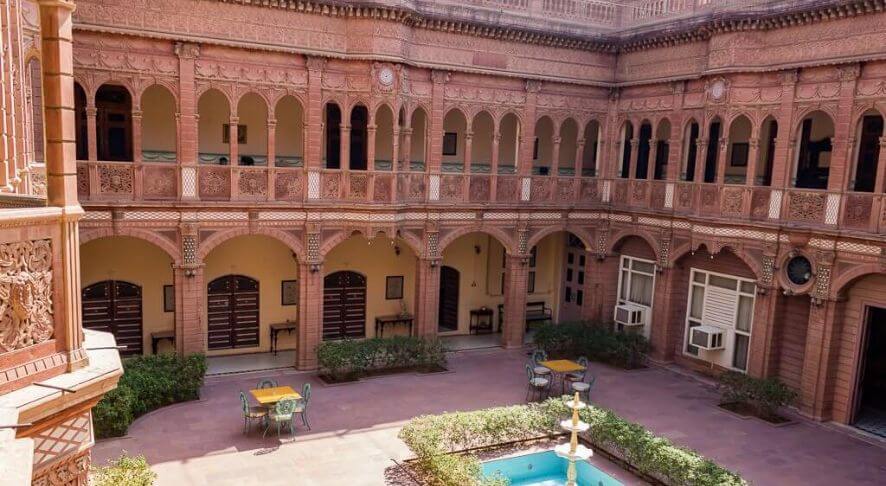
The main courtyards in havelis give both ample fresh air and sunlight to every room.The designers purposefully created all the rooms, balconies, and inner spaces to let several generations of a family live together comfortably and privately.
Go beyond the gates: Discover Lalgarh Palace’s Indo-Victorian elegance
Major Havelis of Rampuria Cluster
The Rampuria Family gained huge luxuriousness in their life and constructed seven royal havelis and each consisting of unique designs:
Kothari Havelis

The Kothari havelis are the oldest among all the Rampuria havelis. Construction starts from here with red sandstone and carved, detailed exteriors. These havelis are a true symbol of professional architecture and Rajasthani royalty.
Bhanwar Niwas
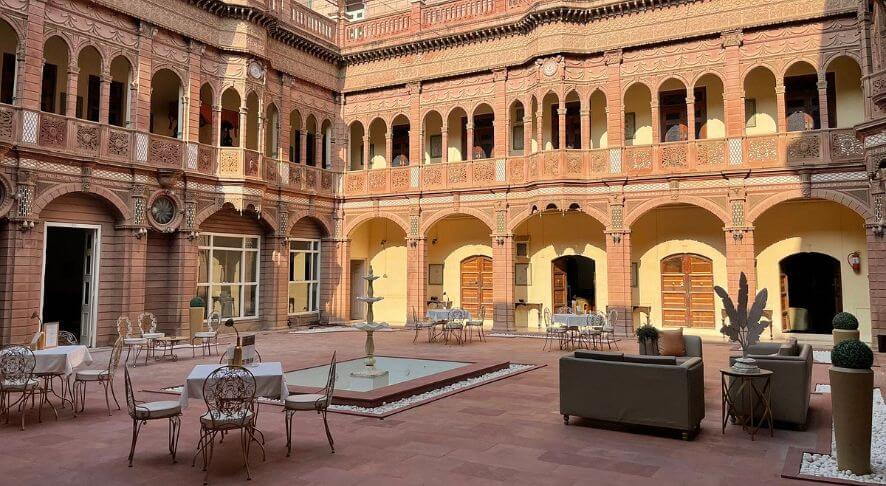
It is to be said a well-structured, well-designed, and well-maintained haveli in the Rampuria haveli cluster. It was built in the 1920s as a residence of Bhanwarlalji Rampuria, but has now been renovated into a Hotel with fancy artworks and designs.
Other Notable Structures
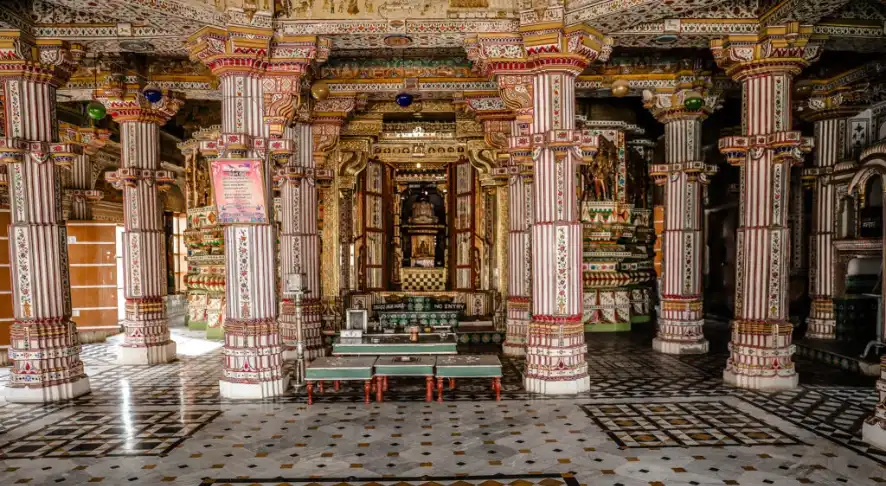
There are many more beautiful havelis along Rampuria Lane, and each one has a special design and history. Individuals still occupy or own some of these havelis today, adding to the allure of Bikaner’s past and enriching its cultural identity.
Step into faith: Explore Karni Mata Temple’s divine mystery
Travel tips to visit Rampuria Havelis
These tips help you to explore Rampuria Haveli at your best:
- Carry your camera with you to capture Haveli’s royalty and Rajasthani architecture.
- Wear single-layered and lightweight clothes to enjoy exploring utmost.
- Don’t touch interiors to preserve their original quality.
- Follow the rules and guidelines written on boards or provided by authorities.
- Carry essentials with you like a water bottle, glasses, and comfortable footwear.
You might also like: Junagarh Fort—Bikaner’s royal legacy in stone
Ideal Time to Visit
You can explore Rampuria Haveli in Bikaner between October and March to experience Rajasthani culture, royal charm, and rich heritage. Avoid visiting during summer and monsoon, as extreme heat and heavy rain can lead to temporary closures.
Timings of Visiting Rampuria Haveli
Rampuria Haveli is in Bikaner’s main city, which makes it visible at all times of the day, but for the majestic views, you have to visit between 6:00 AM to 6:00 PM. Some havelis and their Interiors are restricted to enter, however, you can visit Bhanwar Niwas Hotel to experience its royalty.
Bikaner’s Ancient Gem – Explore the Sacred Kodamdeshwar Temple
How to Reach
Old city of Bikaner is the home to Rampuria Havelis and it can be accessible from several easy of transportation like flights, trains and buses from nearby cities:
By Flight: Bikaner is about 15 km from Nal Airport which is the nearest to the city. It is very well connected to places such as Delhi and Jaipur. You can get a taxi at the airport to take you to the havelis.
By Train: Bikaner Junction, located just 2–3 km from Rampuria Havelis, connects to major Indian cities such as Delhi, Jaipur, and Mumbai. Auto-rickshaws and taxis are easy to find outside of the station.
By Bus: Government and private authorities provide buses that go from Jaipur, Jodhpur, Ajmer and Delhi to Bikaner. You can get to the Havelis by car or bus and local transport.
Frequently Asked Questions
1. Who built Rampuria Haveli?
Ans: The Rampuria merchant family built the Rampuria Havelis in the 15th century.
2. What is the timing of Rampuria Haveli?
Ans: Visitors can view the havelis from outside anytime, ideally between 6:00 AM to 6:00 PM.
3. Who owns Rampuria Haveli?
Ans: The descendants of the Rampuria family privately own them.
4. What is the history of Rampuria Havelis?
Ans: A wealthy trading family constructed them in the 15th century to showcase their status and heritage.
5. What are Rampuria Havelis famous for?
Ans: Visitors admire their red sandstone facades, intricate jharokhas, elegant frescoes, and the unique blend of Rajput, Mughal, and European styles.
6. Are visitors allowed inside Rampuria Havelis?
Ans: Visitors can view the exteriors, but most havelis do not allow public entry. Bhanwar Niwas is open as a hotel.
7. How many havelis are there in the Rampuria cluster?
Ans: There are seven major havelis in the Rampuria cluster.
8. How to reach Rampuria Havelis in Bikaner?
Ans: They are located in Bikaner’s old city, around 2–3 km from Bikaner Junction railway station.
9. Why are Rampuria Havelis considered architectural marvels?
Ans: They feature detailed stone carvings, jharokhas, and a blend of Rajput, Mughal, and European styles.
